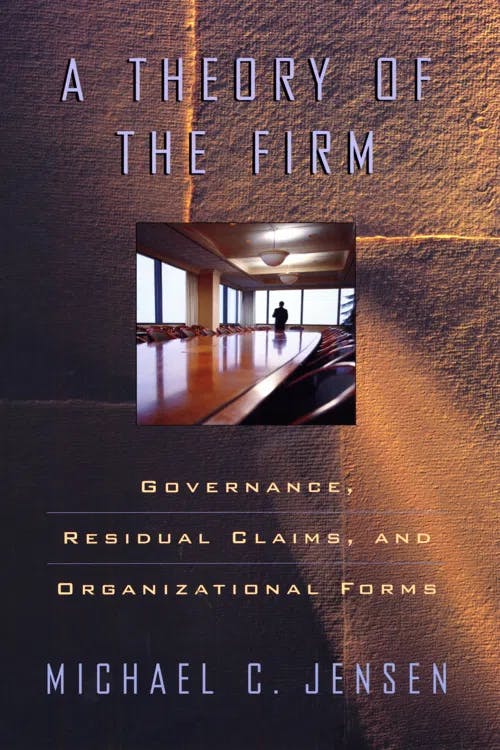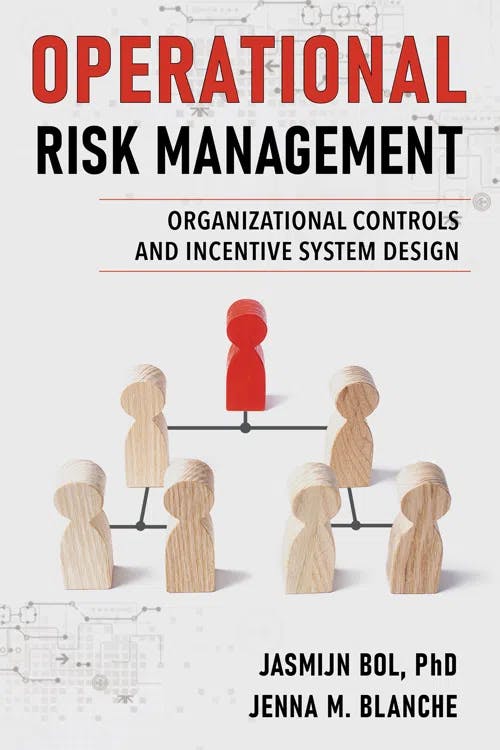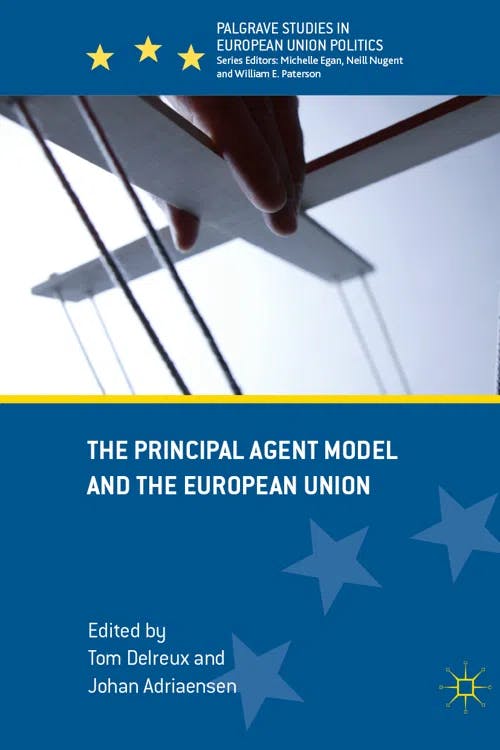What is the Principal-Agent Problem?
MA, Management Science (University College London)
Date Published: 30.01.2024,
Last Updated: 30.01.2024
Share this article
Defining the principal-agent problem
In economics, the principal-agent problem occurs when a principal (i.e., the owner of a resource) delegates a task, service or decision to an agent and a conflict or misalignment of interests arises between both parties. Assuming that both the principal and agent are utility maximizers, this misalignment will lead to either of them acting in their own self-interest. A solution to the problem must be found, so that both parties can harmoniously behave in their mutual best interests.
In 1976, economists Michael C. Jensen and William H. Meckling created the most influential formulation of the principal-agent problem in their paper “Theory of the Firm: Managerial Behavior, Agency Costs and Ownership Structure.” In economics, this problem falls under the study of agency theory, which is often thought to be part of broader branches of microeconomics such as game theory and incentive design. Michael C. Jensen reprinted the findings of his paper in A Theory of the Firm (2003), where he explains the foundations and principles of the principal-agent problem:
We define an agency relationship as a contract under which one or more persons—the principal(s)—engage another person—the agent—to perform some service on their behalf that involves delegating some decision-making authority to the agent. If both parties to the relationship are utility maximizers, there is good reason to believe that the agent will not always act in the best interests of the principal. The principal can limit divergences from her interest by establishing appropriate incentives for the agent in the contracts they create and by incurring monitoring costs designed to limit the aberrant activities of the agent. In addition, in some situations it will pay the agent to expend resources (bonding costs) to guarantee that he will not take certain actions that would harm the principal or to ensure that the principal will be compensated if he does take such actions.
Michael C. Jensen
We define an agency relationship as a contract under which one or more persons—the principal(s)—engage another person—the agent—to perform some service on their behalf that involves delegating some decision-making authority to the agent. If both parties to the relationship are utility maximizers, there is good reason to believe that the agent will not always act in the best interests of the principal. The principal can limit divergences from her interest by establishing appropriate incentives for the agent in the contracts they create and by incurring monitoring costs designed to limit the aberrant activities of the agent. In addition, in some situations it will pay the agent to expend resources (bonding costs) to guarantee that he will not take certain actions that would harm the principal or to ensure that the principal will be compensated if he does take such actions.
Causes and consequences of the principal-agent problem
It is helpful to use an example to bring the principal-agent problem to life, and understand its causes and consequences. The most commonly used example in agency theory literature happens within firms and organizations across the globe. In Operational Risk Management (2021), Jasmijn Bol and Jenna M. Blanche present a clear example of a principal-agent problem where the principal is the shareholder or group of shareholders who own the firm (e.g., through the acquisition of stocks). The agent here, is the CEO or the members of the executive board who make strategic decisions on behalf of the shareholders. Bol and Blanche explain:
While principals have a general awareness of agents’ responsibilities, agents possess the intricate details about the tasks and decisions being performed on the principals’ behalf. This disproportionate relationship invokes instability and distrust. Consider, for example, a CEO of a Fortune 500 company. The CEO has far more information about the appropriateness of strategic actions than any of the shareholders. As a result, when the CEO chooses which among a variety of strategic actions to pursue, he or she will likely select the one that is most beneficial to him or herself; such as, an investment project that materializes within the CEO’s tenure, even though it does not have the highest net present value. (2021)
Jasmijn Bol and Jenna M. Blanche
While principals have a general awareness of agents’ responsibilities, agents possess the intricate details about the tasks and decisions being performed on the principals’ behalf. This disproportionate relationship invokes instability and distrust. Consider, for example, a CEO of a Fortune 500 company. The CEO has far more information about the appropriateness of strategic actions than any of the shareholders. As a result, when the CEO chooses which among a variety of strategic actions to pursue, he or she will likely select the one that is most beneficial to him or herself; such as, an investment project that materializes within the CEO’s tenure, even though it does not have the highest net present value. (2021)
In this example, notice that the CEO (the agent) is taking advantage of their position in the organization to benefit from financial gains. However, their actions are not in line with the best interests of the shareholders, whose aim is to maximize the net present value of the organization. It is not uncommon to find similar examples to the one above in different areas of a business. Indeed, Bol and Blanche explain that this agency relationship does not only happen between shareholders and executive board members, but that there are many organizational layers where this problem can arise.
Between each hierarchical level of an organization resides an agency relationship, in which subordinates are hired to act on behalf of supervisors, and hence, agency problems are imminent. (Bol and Blanche, 2021)
Bol and Blanche continue to explain that the main cause behind the principal-agent problem is information asymmetry. This happens when one party — either the principal or the agent — has more information in the decision-making process than the other one:
Information asymmetry in principal-agent relationships gives rise to moral hazard, whereby agents take unobserved actions in their own self-interest. Broadly speaking, moral hazard is when one party takes a risky or self-serving action knowing the other party will bear the negative consequences. This dynamic creates a temptation to ignore the moral implications of a decision: doing what benefits oneself the most instead of what one committed to. (Bol and Blanche, 2021)
This phenomenon of asymmetric information is what causes people to act in their best self-interest, which leads to moral hazard. In economics, moral hazard refers to a situation where one party takes a risky or self-serving action knowing the other party will bear the negative consequences. It is important to note that, even though the problem can go both ways (i.e., the principal has more information than the agent and benefits from it, or vice versa) it is usually the agent who uses information asymmetry to reap the benefits in a situation. This is because, as a delegatee, the agent is familiar with the day-to-day details of the task they have been assigned to perform. This means that they will be able to collect more information on the potential actions that can be taken for their individual benefit.
Of course, the causes behind the principal-agent problem are not limited to information asymmetry. It may also be the case that agents act for their own benefit due to a lack of motivation or incentive to perform the task that the principal is asking. Equally, it may be attributed to the personalities involved and their inherent goodwill. Indeed, recent studies indicate that people who score highly in narcissism during personality tests are more likely subject to the principal-agent problem.
These root causes, in combination or in isolation, will give rise to the principal-agent problem. Broadly speaking, the main consequence of this problem is a clear misalignment and conflict in priorities, which leads to discontent and dissatisfaction on the principal or agent’s end. In agency theory, this dissatisfaction translates to “agency costs;” the price (financial and non-financial) that either the agent, principal or both parties incur from the conflict of interests. In A Theory of the Firm (2003), Michael C. Jensen goes into depth on the specific types of agency costs that exist, with an emphasis on “residual loss” as the overarching agency cost:
The dollar equivalent of the reduction in welfare experienced by the principal as a result of this divergence is also a cost of the agency relationship, and we refer to this latter cost as the “residual loss.” We define agency costs as the sum of
1. the costs of creating and structuring contracts between the principal and the agent,
2. the monitoring expenditures by the principal
3. the bonding expenditures by the agent, and
4. the residual loss.
Solutions for the principal-agent problem
Despite the agency costs that arise in a principal-agent relationship, it is important to note that the principal initially delegates a task or decision to the agent because they are convinced that the benefits of doing so will outweigh the costs. Therefore, the objective of agency theory is to minimise these costs to ensure that the principal’s initial hypothesis is indeed met. This dilemma is explained by Tom Delreux and Johan Adriaensen in The Principal Agent Model and the European Union (2017):
A key aspect of the principal–agent model is that delegation not only implies benefits for the principal, but also agency costs. Yet the benefits initially always outweigh the costs since otherwise delegation would not occur. The costs of delegation relate to the fact that there is a real possibility that the agent will act opportunistically and behave contrary to what the principal wants.
Edited by Tom Delreux and Johan Adriaensen
A key aspect of the principal–agent model is that delegation not only implies benefits for the principal, but also agency costs. Yet the benefits initially always outweigh the costs since otherwise delegation would not occur. The costs of delegation relate to the fact that there is a real possibility that the agent will act opportunistically and behave contrary to what the principal wants.
In other words, the objective of agency theory is to find a solution to the conflict between principal and agent, which leads to agency costs. To solve this, incentives are designed to nudge and encourage people to behave in the optimal and desirable way. Going back to our organizational example, these incentives often take the form of bonuses or promotions, which motivate agents to align their actions with the principal’s desired outcome. The American business executive and public administrator Chester Barnard lists the types of incentives that can solve the principal-agent problem in his award-winning book The Functions of the Executive (1971).
The specific inducements that may be offered are of several classes, for example: a) material inducements; b) personal non-material opportunities; c) desirable physical conditions; d) ideal benefactions. (1971)
Chester I. Barnard
The specific inducements that may be offered are of several classes, for example: a) material inducements; b) personal non-material opportunities; c) desirable physical conditions; d) ideal benefactions. (1971)
When economists design incentives to encourage specific behaviors, they build them into contracts; shared agreements between principals and agents that ensure incentives are granted (conditional on the performance of a desired output). Indeed, as Samiran Banerjee mentions in Intermediate Economics (2021), contracts are carefully and mathematically modeled, accounting for the observable desired output and the incentive required to induce that output:
The principal has to write a contract based on the observable output generated by the agent so as to induce him to undertake an action that is optimal from her perspective. While she runs the risk of not compensating him enough to motivate him to work hard, he runs the risk of working hard but getting inadequately compensated because hard work is not perfectly reflected in the output generated. Thus principal-agent contracts are predicated on optimal risk-sharing between the two parties. (2021)
Samiran Banerjee
The principal has to write a contract based on the observable output generated by the agent so as to induce him to undertake an action that is optimal from her perspective. While she runs the risk of not compensating him enough to motivate him to work hard, he runs the risk of working hard but getting inadequately compensated because hard work is not perfectly reflected in the output generated. Thus principal-agent contracts are predicated on optimal risk-sharing between the two parties. (2021)
Barnard also stresses how often material or financial incentives are ineffective to solve the principal-agent problem (which at the time were almost exclusively considered by economic theory): “even in purely commercial organizations, material incentives are so weak as to be almost negligible except when reinforced by other incentives” (1971). To solve this conundrum, other types of solutions must be put in place. For instance, in the shareholder-CEO example mentioned above, it might be optimal to gather the shareholders and executive board to discuss and realign on the objectives of the organization looking ahead.
More examples of the principal-agent problem
Throughout this article, we have focused our attention on the principal-agent problem in relation to organizations; the main focus of agency theory literature. However, there are a plethora of situations and day-to-day examples where we see this problem arising and being solved.
For example, a landlord (principal) delegates the rental of flats to a letting agency (agent). With a well-designed contract in place, the principal avoids any unintended agency costs such as the agent benefiting from exorbitantly high margins, or following unstandardized and biased criteria when choosing tenants.
The principal-agent problem can be extrapolated beyond the business world too, and can be found in such areas as politics and international affairs. For example, the relationship between voters and governments can be seen as a principal-agent problem, where voters (the principals) delegate the ruling and mandate of their nation to a government (the agent). The election manifesto and votes may be interpreted as the “contract” that both parties confidently sign to enact the desired policies.
Equally, as editors Andreas Dür and Manfred Elsig summarize, The European Union’s Foreign Economic Policies (2014) discusses how the principal-agent model behaves in the context of different international relations and affairs:
The contribution by Conceição-Heldt investigates the relationship between the Commission (agent) and the member states as collective principal in the current Doha trade negotiations.
[...] The final contribution by Leblond looks at the strategic behaviour of an international institution (as agent) managing its relationship with multiple principals in the domain of accounting standards.
Edited by Andreas Dür and Manfred Elsig
The contribution by Conceição-Heldt investigates the relationship between the Commission (agent) and the member states as collective principal in the current Doha trade negotiations.
[...] The final contribution by Leblond looks at the strategic behaviour of an international institution (as agent) managing its relationship with multiple principals in the domain of accounting standards.
The contributors to the book choose to model international and public affairs as principal-agent relationships, because this approach takes into account the costliness and difficulty of implementing regulatory measures (or “contracts”, in principal-agent terminology) between the representatives of a principal and agent in different scenarios. As Dür and Elsig explain,
The main problem for the principal is that control is costly, requiring him to achieve a balance between agency losses and control costs. (2014)
Closing thoughts
To conclude, the principal-agent problem occurs when a principal (i.e., capital or resource owner) assigns an action or task to an agent and a conflict or misalignment of priorities exists between the two. This misalignment is often caused by asymmetric information, which induces the principal or agent to use this additional information to perform a self-serving action. This produces agency costs for the disadvantaged party, which can be mitigated through the design of contracts and incentives. These incentives do not necessarily have to be of a financial nature, though these are generally thought to be the most effective. The optimal contract or incentives will vary depending on the specific principal-agent scenario — whether in business, politics, or a range of other contexts.
Further reading on Perlego
To read more about the principal-agent problem in the context of the European Union, you can read Chapter 4 of The European Union’s Foreign Economic Policies (2014), edited by Andreas Dür and Manfred Elsig
To read more about the mathematical models behind incentive design, you can read The Theory of Incentives (2009) by Jean-Jacques Laffont and David Martimort
To read more about the principal-agent problem in the context of public policy making and foreign affairs, you can read Public Administration & Public Management: The Principal-Agent Perspective (2006) by Jan-Erik Lane
To read about the principal-agent problem in the context of sports governance, you can read The EU in International Sports Governance: A Principal-Agent Perspective on EU Control of FIFA and UEFA (2016) by Arnout Geeraert
What is the principal-agent problem in simple terms?
What is information asymmetry?
What is the most common example of the principal-agent problem in real life?
Bibliography
Banerjee, S. (2021) Intermediate Microeconomics. 2nd edn. Taylor and Francis. Available at: https://www.perlego.com/book/2194345/intermediate-microeconomics-a-toolbuilding-approach-pdf
Barnard, C. (1971) The Functions of the Executive. Harvard University Press. Available at: https://www.perlego.com/book/2039368/the-functions-of-the-executive-thirtieth-anniversary-edition-pdf
Bol, J. and Blanche, J. (2021) Operational Risk Management. Business Expert Press. Available at: https://www.perlego.com/book/2497210/operational-risk-management-organizational-controls-and-incentive-system-design-pdf
Dür, A. and Elsig, M. (eds.) (2014) The European Union’s Foreign Economic Policies. Taylor and Francis. Available at: https://www.perlego.com/book/1662676/the-european-unions-foreign-economic-policies-a-principalagent-perspective-pdf
Delreux, T. and Adriaensen, J. (eds.) (2017) The Principal Agent Model and the European Union. Springer International Publishing. Available at: https://www.perlego.com/book/3482755/the-principal-agent-model-and-the-european-union-pdf
Jensen, M. (2003) A Theory of the Firm. Harvard University Press. Available at: https://www.perlego.com/book/3040049/a-theory-of-the-firm-governance-residual-claims-and-organizational-forms-pdf
External sources
To read more about the personality traits that influence the principal-agent problem, read “The Impact of CEO Narcissism Behavior on Firm Performance through Earnings Management”
MA, Management Science (University College London)
Inés Luque has a Masters degree in Management Science from University College London. During high school, she developed a strong interest in Economics, leading her to win the national Economics prize in her country of nationality, Spain. Her expertise is in the areas of microeconomics, game theory and design of incentives. Inés is passionate about the publishing industry and is currently working in the consulting department of the Financial Times in London.






